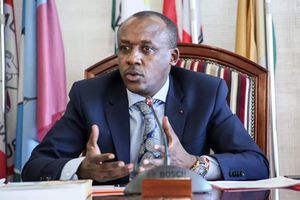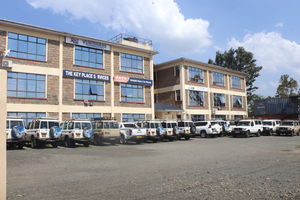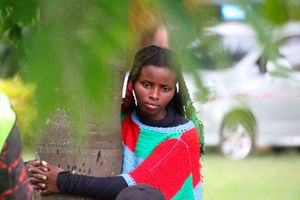Kenya scrambles for Sh28bn annual HIV budget after Trump’s foreign aid directive

To fight HIV effectively, Kenya needs a steady supply of essential commodities, including antiretroviral drugs (ARVs).
What you need to know:
- To fight HIV effectively, Kenya needs a steady supply of essential commodities which treat and suppress HIV to prevent disease progression and transmission.
- Other critical commodities include HIV viral load testing reagents and equipment to monitor treatment effectiveness, and early infant diagnosis (EID) kits.
Kenya needs to secure an annual budget of Sh28 billion for HIV commodities in the coming years to ensure continued access to life-saving drugs and interventions amid changing foreign aid policies and global health financing trends.
This was revealed by the Ministry of Health in collaboration with the Council of Governors, the National Syndemic Diseases Control Council, the National AIDS and STIs Control Programme and the Kenya Medical Supplies Authority at a briefing to assess the impact of a US President Donald Trump Executive Order on the reassessment and realignment of US foreign assistance.
To ensure the sustainability of HIV programmes, the Ministry of Health has recommended that the government fully fund these HIV commodities for the next five Medium Term Expenditure Framework (MTEF) cycles, a strategy that is critical to Kenya's transition to self-sufficiency in HIV funding.
The MTEF is a strategic budgeting framework that allows governments to allocate resources over a three- to five-year period, ensuring that spending is aligned with national priorities, economic capacity and projected revenues.
"By integrating HIV financing into the MTEF and allocating Sh28 billion annually, the country can insulate its HIV programmes from policy-driven aid fluctuations while reinforcing its commitment to universal health coverage. This funding is critical to addressing the country's HIV burden, especially as donor support is subject to potential shifts due to global policy changes. As the international aid landscape evolves, Kenya must plan for long-term financial sustainability to avoid disruptions in HIV treatment and prevention programmes," said Harry Kimtai, the Principal Secretary for Medical Services.
To fight HIV effectively, Kenya needs a steady supply of essential commodities, including antiretroviral drugs (ARVs), which treat and suppress HIV to prevent disease progression and transmission.
The country also needs HIV test kits for rapid and laboratory diagnosis, pre-exposure prophylaxis (PrEP) and post-exposure prophylaxis (PEP) to prevent infection, and condoms and lubricants to reduce the risk of transmission.
Other critical commodities include HIV viral load testing reagents and equipment to monitor treatment effectiveness, and early infant diagnosis (EID) kits to detect HIV in newborns.
Two weeks ago, the White House announced a 90-day pause in US-funded foreign assistance and issued a stop-work order on existing grants and contracts worldwide.
Although this order has since been amended to allow exemptions for 'life-saving humanitarian assistance', many are still assessing the implications of this decision.
On 28 January, the administration granted waivers for "existing life-saving humanitarian assistance programmes", which include "essential life-saving medicines".
This could affect health programmes such as the President's Emergency Plan for AIDS Relief (PEPFAR), which supports HIV/AIDS programmes in 55 countries, including Kenya.
US executive orders have a significant impact on foreign aid allocations, and policies that prioritise domestic funding over international assistance, shift focus to other global health priorities, or impose restrictions on funding recipients can directly affect Kenya's HIV programmes.
With potential shifts in US aid strategies, Kenya needs to prepare for possible reductions or redirection of donor contributions. This will require strengthening local financing mechanisms, enhancing public-private partnerships and optimising domestic resource mobilisation to sustain progress in the fight against HIV.
The Ministry of Health's forecasting and quantification report for the 2024/2025 financial year estimates the cost of HIV commodities at Sh28 billion. These commodities are expected to be procured and distributed with support from the Global Fund for HIV, Tuberculosis and Malaria, which will contribute $47.4 million (23.3 per cent), PEPFAR will contribute $58.7 million (28.8 per cent), and the Government of Kenya will contribute 20 per cent.
This still leaves a funding gap of $72.3 million, or 35.4 per cent.
Despite the urgent financing need, domestic funding for HIV/AIDS programmes remains below target.
In the fiscal year 2024/2025, which ends on 30 June, the National Treasury allocated Sh24.8 billion to address malaria, tuberculosis and HIV/AIDS as part of its contribution to the Global Fund.
The Kenya AIDS Strategic Framework (KASF II), as reported by the National Syndemic Diseases Control Council, estimates that implementing Kenya's HIV response from 2020/21 to 2024/25 will require Sh647.7 billion. This funding will need to be mobilised from domestic sources, the private sector and development partners.
However, the report shows that only 34 percent of the required funding has been raised domestically, falling short of the KASF II target of 50 per cent by 2025.
According to the 2024 HIV estimates, there are approximately 1.4 million people living with HIV in Kenya, including 1.3 million adults and about 75,000 children, all of whom are on antiretroviral therapy.
In 2023, the country recorded 16,752 new HIV infections, with 39 per cent of these cases occurring among adolescents and young people aged 15-24 years. Mother-to-child transmission remains a major challenge, with a rate of 7.3 per cent.
"Kenya needs both national and county adoption of these plans, along with strengthened structural, policy and legal frameworks for optimal investment to end AIDS by 2030," the report noted.
Despite the uncertainties, the ministry has reaffirmed its commitment to sustaining HIV/AIDS treatment and prevention programmes.
"Kenya has made remarkable progress in the fight against HIV/AIDS, with 98 percent of people living with HIV knowing their status and receiving treatment, and 94 percent achieving viral suppression. The ministry is actively working with other development partners and investing in local pharmaceutical manufacturing to prevent interruptions in treatment," said Dr Patrick Amoth, the Director General of Health.





